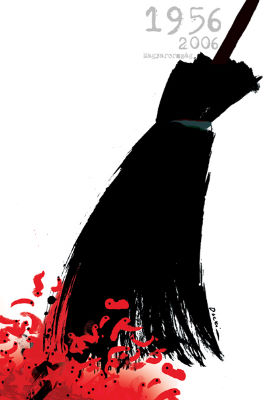
2006, 1956 - 2006, Hungary
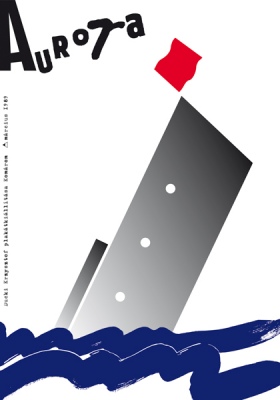
1989, Aurora
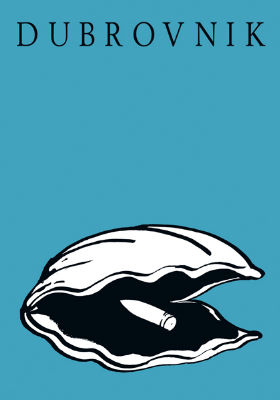
1991, Dubrovnik
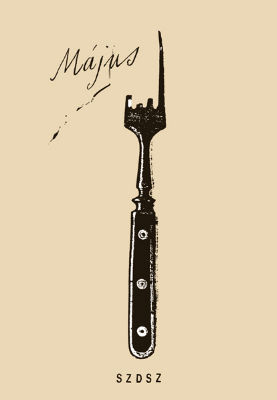
1989, 1st May
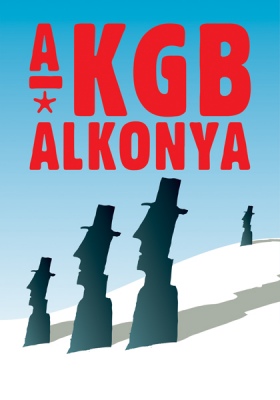
1996, The Fall of the KGB
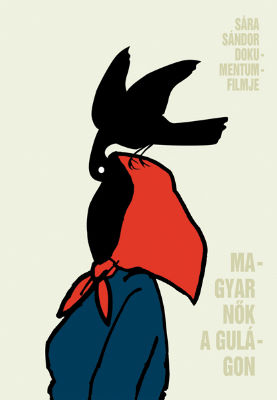
1992, Hungarian women in the Gulags
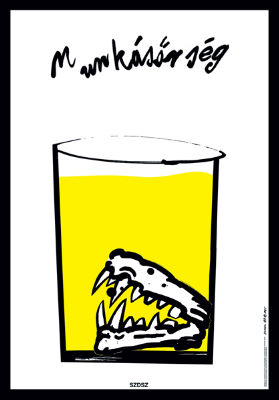
1989, Workers militia
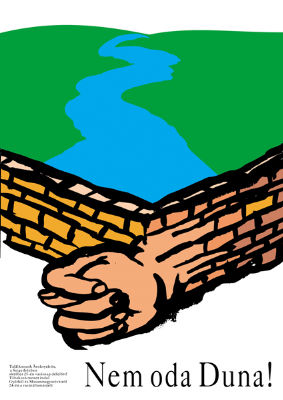
1992, Not that way, Danube
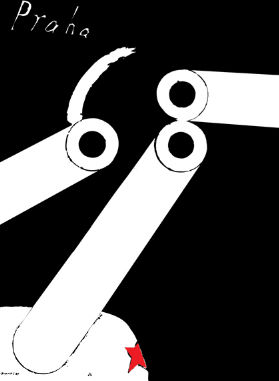
1988 - 1989, Prague '68
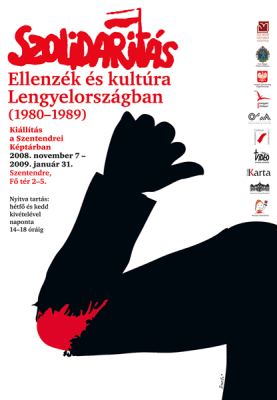
2008, Solidarity
| This web exhibition of 50 posters by the hungarian artists Krzysztof Ducki,
Istvan Orosz and Peter Pocs
accompanies the traveling exhibition "Hungarian Karma" which is currently at the Viborg Stiftsmuseum,
Denmark, 2009.10.23 - 2009.11.22.
Text and pictures were kindly provided by Peter Pocs, who wrote about the exhibition
|
|
Krzysztof Ducki
While I still lived in Poland, a fundamental opposition to the Soviet occupation was a natural attitude for every young person, and patriotism was a part of the upbringing in the family from generation to generation.
In 1981 and for about a year, we experienced uplifting moments with a feeling of freedom - won through the strikes organised by Solidarity. Later, when marital law was declared in Poland, I was forced to emigrate to Hungary. Although for many years, I could not leave Hungary, the experience I had brought with me from my home country gave me the sweet taste of freedom - in my life and in my work. In 1988, I joined the activism that led to the first free elections in Poland and Hungary the following year, and thus to independency for both countries. Twenty years have passed since then. Poland and Hungary both have joined the NATO and the family of European countries. I have slowly begun to forget what it once meant to have borders. Over the years I have realised, however, that it is easier to change the system of a country than to change the mentality of its people. Hungary still stands "with one foot" in a communist reality. The anniversary of the 1956's revolution still makes any government in power feel uncomfortable. |
 2006, 1956 - 2006, Hungary |
 1989, Aurora |
 1991, Dubrovnik |
 1989, 1st May |
 1996, The Fall of the KGB |
 1992, Hungarian women in the Gulags |
 1989, Workers militia |
 1992, Not that way, Danube |
 1988 - 1989, Prague '68 |
 2008, Solidarity |
|
|
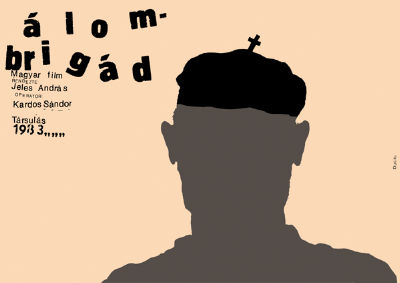 1988, Dream team |
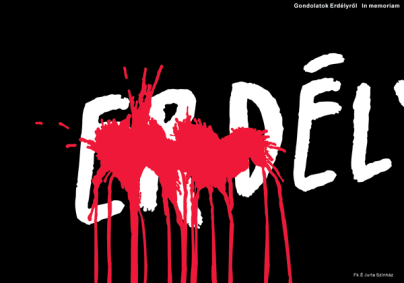 1988, Transylvania |
|
| Istvan OroszThe visual representation of the political situation called the change of system is a kind of change of dimensions. On one hand, there is the pentacle red star of the tyrannies, on the other hand, there are the yellow stars on the blue sky above the European Union, and vice versa. Out of the frying pan and into the fire. Ironically, the spectator may recall Karl Marx's familiar saying, "Philosophy was standing on its head, I set it upon its feet" - it is always a matter of point of view. |
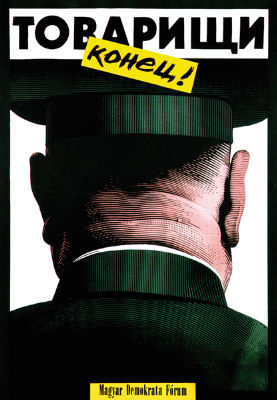 1989, Comrades it's over! |
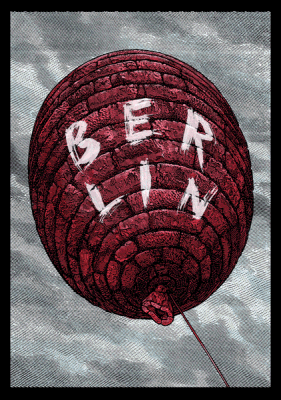 1991-2004, Berlin |
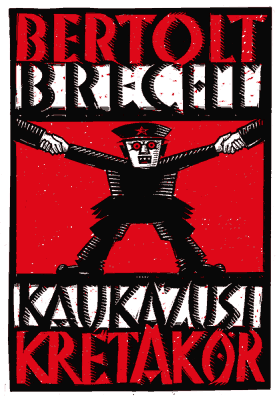 1998, The Caucasian Chalk Circle |
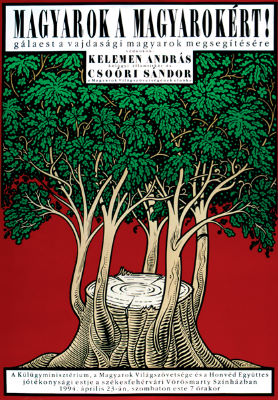 1994, Hungarians for Hungarians |
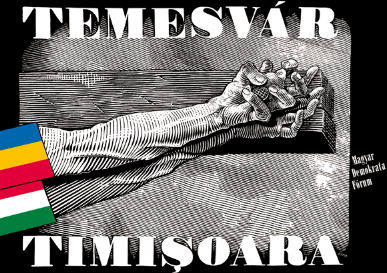 1989, Timisoara |
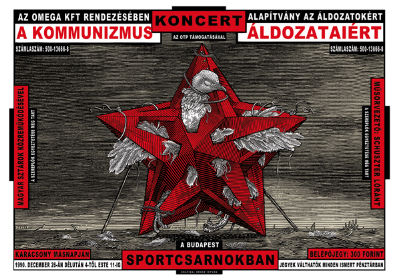 1990, Concert for the Victims of Communism |
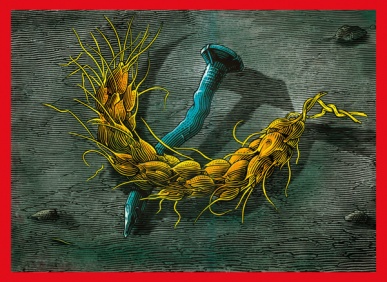 1989, Nail and Corn |
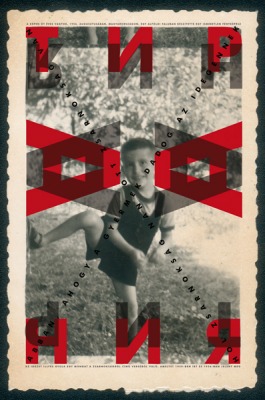 2006, 1956 (One Sentence on Tyranny) I. 1956 - 2006 |
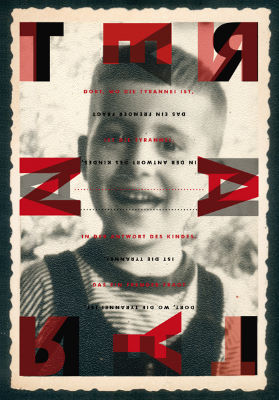 2006, 1956 (One Sentence on Tyranny) II. 1956 - 2006 |
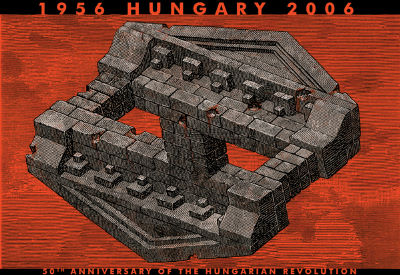 2006, 1956 - 2006 (50th Anniversary of the Revolution) I. |
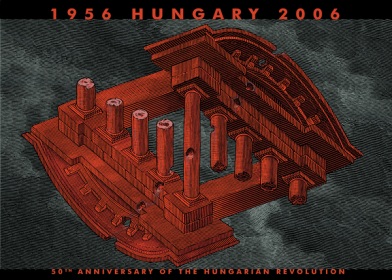 2006, 1956 - 2006 (50th Anniversary of the Revolution) II. |
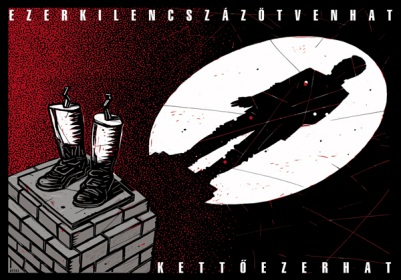 2006, Stalin Sculpture |
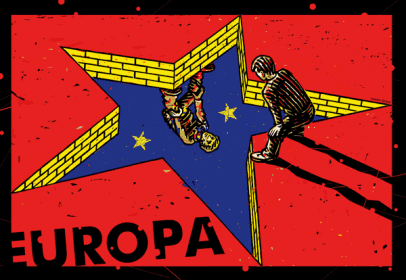 2004, Europe |
|
Peter PocsUndigested past,
Regurgitated present, Devoured future. Hungarian karma. |
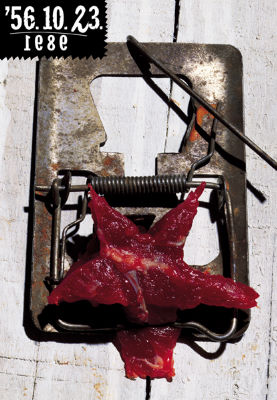 1989, / 23. 10. 1956 - 1989 / I. |
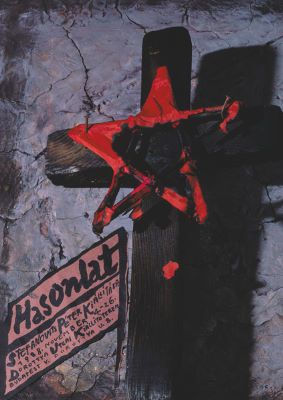 1988, Simile |
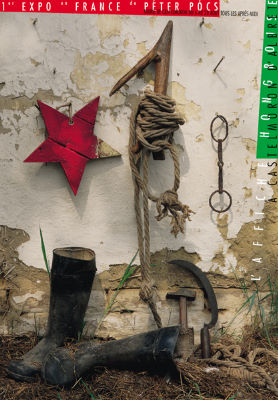 1988, Peter Pocs's First Exhibition in France |
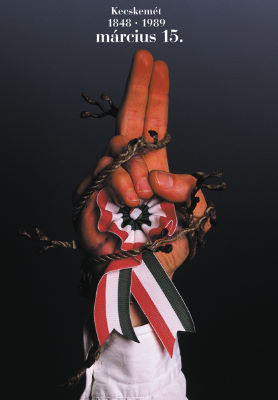 1989, Kecskemét, 15th March 1848 - 1989 |
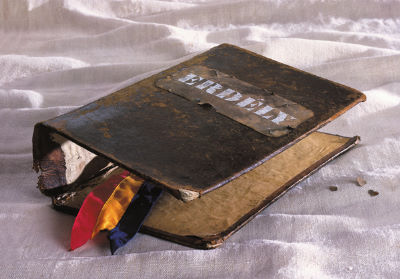 1988, Transylvania |
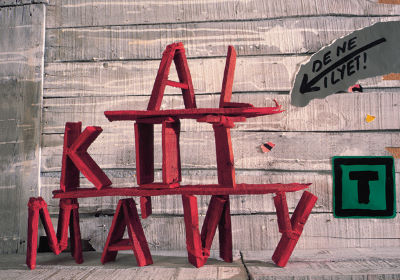 1989, Constitution, but not one like this! |
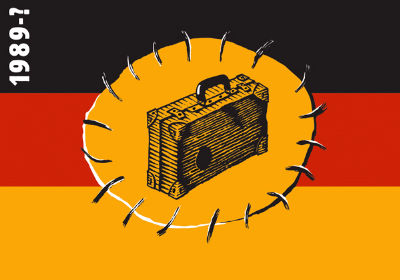 1989, 1989 - ? |
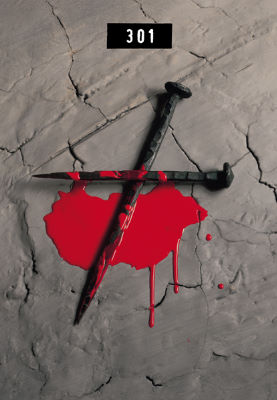 1989, 301 |
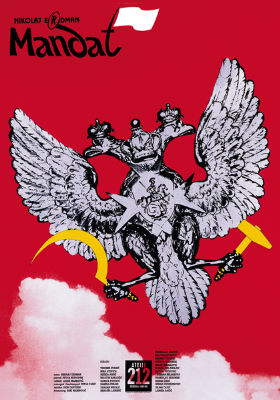 1989, N. Erdmann: The Mandate |
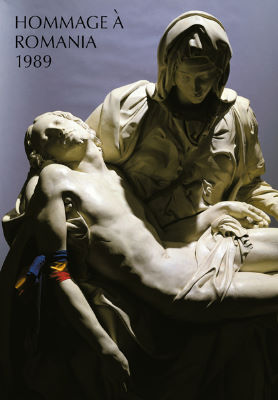 1989, Hommage à Romania |
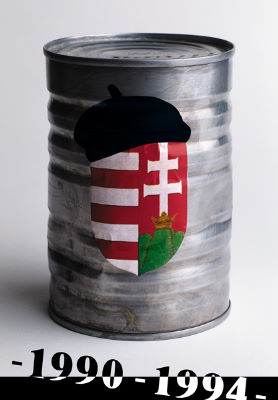 1994, 1990 - 1994 |
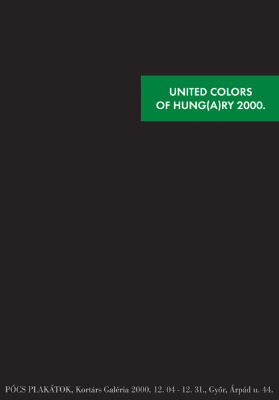 2000, United colors of Hung(a)ry 2000 |
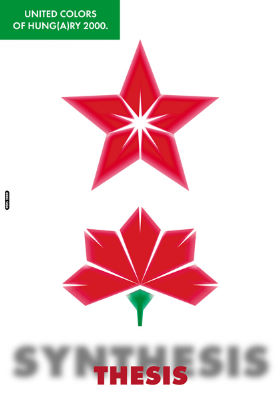 2000, United colors of Hung(a)ry 2000 (Thesis / Synthesis) |
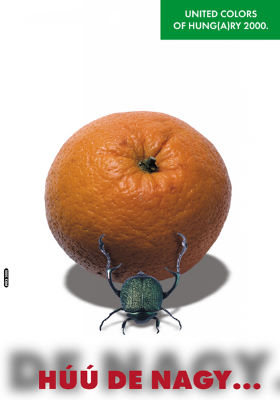 2000, United colors of Hung(a)ry 2000 (Gee so huge...!) |
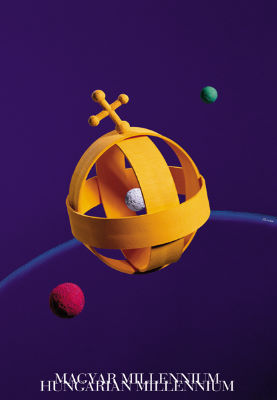 2000, Hungarian Millennium |
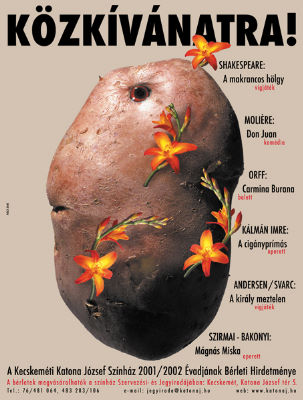 2001, By Common Request! |
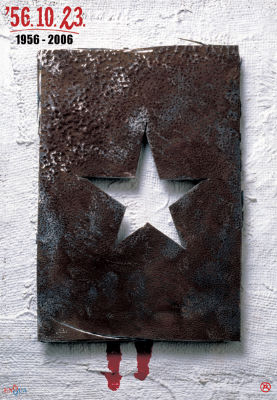 2006, / 23. 10. 1956 - 2006 / II. |
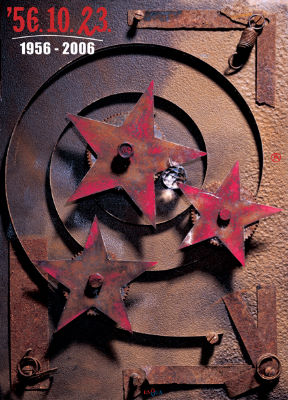 2006, / 23. 10. 1956 - 2006 / III. |
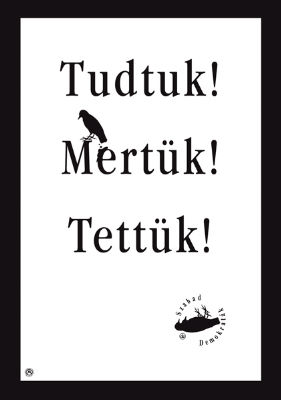 2009, We knew it! We dared to do it! We did it! |
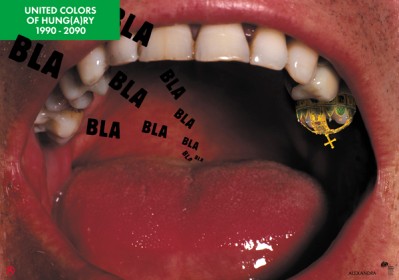 2000-2005, United colors of Hung(a)ry 1990 - 2090 (Bla... bla... bla...) |
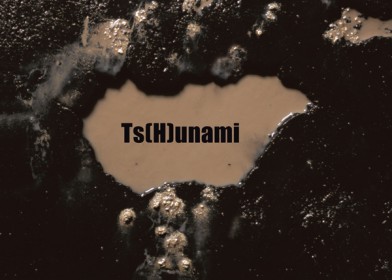 2004, Ts(H)unami |
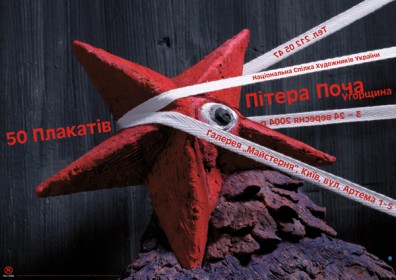 2004, 50 Posters by Pócs, Hungary |
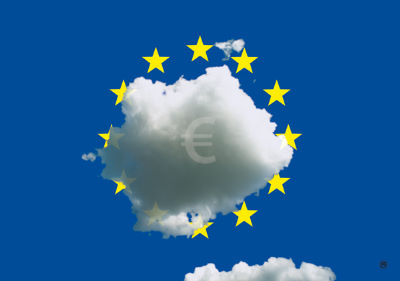 2009, Euro |
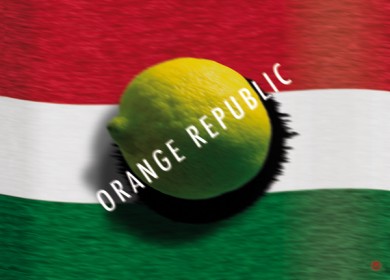 2009, Orange Republic |
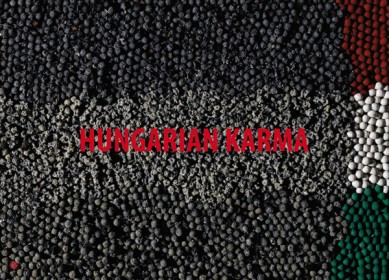 2009, Hungarian Karma |
|
THE HUNGARIAN MESSAGE
We fight for ourselves, and we fight for Europe. Hungarian Posters in Denmark. When glancing over the posters that make up this exhibition, you feel at home - not necessarily in the Danish idyl but in the European house, a house in dispute, a turbulent house, always alive, always demanding, always giving. The artistic value of the posters speaks for itself. Instead, let me attempt to discuss the message that lies behind - the message of the one of a kind, the message of the dissident that uniquely characterises Hungary, Hungary's message to the rest of Europe. Since the mid 1980s, I have been engaged in Central Europe almost daily, and I do not hesitate to claim that as for Central Europe, Hungary is one of my two favourite countries. The other country is Poland, and in this respect it is an extra benefit that the Hungarians and the Poles - as different as they may be, like for instance Poland being Slavic while Hungary is not - consider themselves sister nations joined through the times in the same heroic and also tragic history, in the same desire to be Western although they lie east of the West, the insensitive, arrogant, egotistical, and forgetful West. I have been an observer of Hungary since 1956 - since the Hungarians' grand, bloody revolt against the Soviet Union, the non-European imperial power that no longer exists. At that time, I was a pupil at Dyssegaard School in Vangede, north of Copenhagen, 13 years old, and beginning to wake up. Suddenly, Hungary was over us - a cry for personal freedom and national sovereignty, both of them inalienable European rights. Every day during the lunch break, the pupils of the Dyssegaard School were informed of what went on in Hungary. A loudspeaker had been put up in the school yard; the headmaster reported; the graveness of the situation was emphasized. We went around with the Hungarian tricolour on our clothes. We talked about Hungary during classes, we located Hungary on the map, the history teacher told about the tribes of a Magyar nation of horsemen that had arrived in Europe in the ninth century and a hundred years later asked the Pope to be christianised after having lost the battle of Lechfeld. At home in the evening, we heard the Russian tanks over the radio shooting Budapest into ruins. I still recall Imre Nagy's last speech - his moving plea to the United Nations, his proclamation of the Hungarian neutrality, the thunder of guns in the background. Lastly, I remember the scratchy voice from Gy?r: "This is the free Hungary, we fight for Hungary, we fight for Europe. Do not forget us!" In the West, on behalf of an amoral convenience, we forgot Hungary meaning that we forgot Central Europe and thus forgot Europe. We were rather comfortable with the division of our old continent into East and West Europe, a political perversion that 20 years ago this summer was suppressed through a Hungarian initiative to a considerable extent - once more the Hungarian courage and of course the Polish courage. The message from Hungary - be it during the Mongolian assault in the 13th century, in 1526 against the Turks, in 1848-49 against the Habsburgs and the Russians, and in the 20th century against the Soviet Union - was always this: We fight for ourselves, and we fight for Europe. On the occasion of this exhibition where we meet three Hungarian artists, one of which is also a Pole, I dare to assert that the Hungarians, who came to us from Central Asia and chose to become Europeans, have proven throughout history to be better Europeans than the Europeans who were born to be Europeans. This statement is not just out of joy over this exhibition coming to Denmark. It is also an honour that, on behalf of Denmark where it is so easy to be European that many either don't care or are outright against, we have the opportunity to pay tribute to the Europeans by choice - the true Europeans. 1989 was a landmark in the course of European events - undoubtedly the best year in the history of this continent since 1945 and maybe our best year altogether. Let us not forget that this year was staged by Hungary, by Hungarian dissidents, and by Hungarian artists whose criticism of the dictatorship and whose stance on freedom and dignity of the individual emerges to this day from in the posters shown in this exhibition. It was they - these dissidents, these artists, and a few courageous communists such as Imre Pozsgay, Gyula Horn, and Miklos Nemeth - who took action for Hungary and for Europe when they broke through the iron curtain between Hungary and Austria in June of 1989 and let thousands of East German summer tourists depart freely and legally to West Germany. It was then that the first brick was removed from the wall that fell six months later in Berlin whereupon the entire inhuman communist empire collapsed. Then, Hungary's tragedy would turn into Hungary's triumph - to the Hungarians' entry into the home they had chosen a thousand years earlier. Hungary is a small county, isolated in consequence of its language, and a mistreated country as a consequence of the Treaty of Trianon in 1920, a peace treaty that left behind millions of Hungarians in Slovakia, Rumania, Serbia, Croatia and Ukraine - a forced-upon peace in other words, not a European peace. This Hungary was European from the start as we can read out of the exhibition here, an exhibition that deserves to move on out in this country and in Europe. It deserves so for two reasons: for its artistic quality and for its deeper meaning, the reality that Hungary was always Europe - from its foundation under Árpád to the grand renaissance king, Mátyas Corvinus, and on to modern day statesmen, István Szechenyi, Lajos Kossuth, Gyula Andrássy, Imre Nagy and poets such as Sándor Pet?fi, Attila Jozsef, Endre Ady, Sándor Márai, György Konrád, and the Nobel Prize winner Imre Kertesz, a cavalcade of European names comprising - each in their own right and with their own message - the artists who are now represented in Denmark. Per Nyholm Per Nyholm was Jyllands-Posten's correspondent in Central Europe and the Balkan countries from 1986 to 2005. He now lives in Rome and Vienna and writes about art and culture plus he writes a regular Thursday column. Last year, he published a book entitled "Europaerne, reportager fra en rejse i Europas erindring" ["The Europeans, Reports from a Journey into the Memory of Europe"].
home previous exhibitions page created on November 2, 2009 / this section is part of Rene Wanner's Poster Page / |